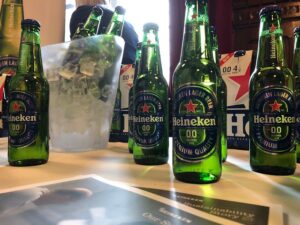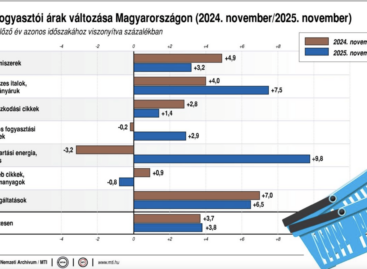Heineken grows as world’s most popular non-alcoholic beer
Heineken posted solid growth in 2024, with non-alcoholic beers and premium lager as key drivers. The beers were particularly appreciated in Africa and Asia, with limited growth in Europe.

Heineken saw global sales rise to 36 billion euros, accounting for organic growth of 5%. Operating profit rose 1.6%, to 4.51 billion euros, which also beat analyst expectations. In contrast, net profit was hit by a significant 874 million euro write-down on the stake in Chinese brewer CR Beer, leading to a decline from 2.3 billion to 1 billion euros.
A notable development was the rise in sales of non-alcoholic beers and ciders, which increased by 10%. Heineken 0.0 is now available in 117 countries and ranks as the world’s most popular non-alcoholic brand. The growth of non-alcoholic beers was especially pronounced in markets such as Brazil and the US. Premium brands such as Amstel, Desperados and Birra Moretti further contributed to the growth.
Overall, Heineken recorded a 1.6% volume growth. Africa, the Middle East and Asia had the strongest volume growth, while growth in Europe was limited to 0.3%. The Dutch beer group therefore continues to focus on premium segments and non-alcoholic alternatives. In 2025, expected operating profit growth will be between 4% and 8%, while the brewer continues to invest in marketing and cost savings to boost profitability.
Retail Detail
Related news
Health-conscious consumers and comprehensive waste recycling – this is how Borsodi Brewery is shaping the market
🎧 Hallgasd a cikket: Lejátszás Szünet Folytatás Leállítás Nyelv: Auto…
Read more >We took you on a flight! (Part 1)
🎧 Hallgasd a cikket: Lejátszás Szünet Folytatás Leállítás Nyelv: Auto…
Read more >Related news
The Hungarian Confederation of Economic Workers also spoke out regarding the inflation data
🎧 Hallgasd a cikket: Lejátszás Szünet Folytatás Leállítás Nyelv: Auto…
Read more >KSH: in November, consumer prices exceeded the values of the same month of the previous year by an average of 3.8 percent
🎧 Hallgasd a cikket: Lejátszás Szünet Folytatás Leállítás Nyelv: Auto…
Read more >In addition to jelly and marzipan Christmas candy, there are more and more specially flavored Christmas desserts on offer
🎧 Hallgasd a cikket: Lejátszás Szünet Folytatás Leállítás Nyelv: Auto…
Read more >






